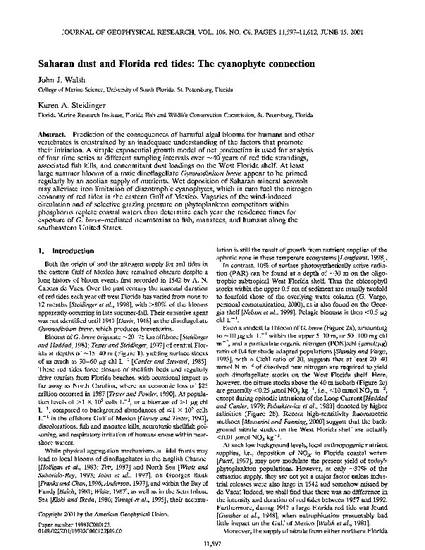
Prediction of the consequences of harmful algal blooms for humans and other vertebrates is constrained by an inadequate understanding of the factors that promote their initiation. A simple exponential growth model of net production is used for analysis of four time series at different sampling intervals over similar to 40 years of red tide strandings, associated fish kills, and concomitant dust loadings on the West Florida shelf. at least large summer blooms of a toxic dinoflagellate Gymnodinium breve appear to be primed regularly by an aeolian supply of nutrients. Wet deposition of Saharan mineral aerosols may alleviate iron limitation of diazotrophic cyanophytes, which in turn fuel the nitrogen economy of red tides in the eastern Gulf of Mexico. Vagaries of the wind-induced circulation and of selective grazing pressure on phytoplankton competitors within phosphorus replete coastal waters then determine each year the residence times for exposure of G. breve-mediated neurotoxins to fish, manatees, and humans along the southeastern United States.
Journal of Geophysical Research - Oceans, v. 106, no. C6, p. 11597-11612
Copyright 2001 by the American Geophysical Union.
Available at: http://works.bepress.com/john_walsh1/8/
